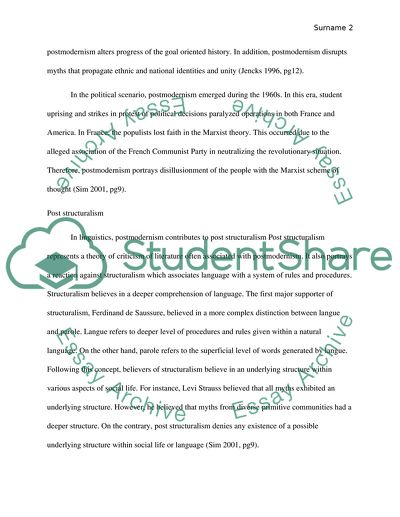Cite this document
(“Postmodernism and Material Culture Essay Example | Topics and Well Written Essays - 2000 words”, n.d.)
Postmodernism and Material Culture Essay Example | Topics and Well Written Essays - 2000 words. Retrieved from https://studentshare.org/visual-arts-film-studies/1666990-postmodernism-and-material-culture
Postmodernism and Material Culture Essay Example | Topics and Well Written Essays - 2000 words. Retrieved from https://studentshare.org/visual-arts-film-studies/1666990-postmodernism-and-material-culture
(Postmodernism and Material Culture Essay Example | Topics and Well Written Essays - 2000 Words)
Postmodernism and Material Culture Essay Example | Topics and Well Written Essays - 2000 Words. https://studentshare.org/visual-arts-film-studies/1666990-postmodernism-and-material-culture.
Postmodernism and Material Culture Essay Example | Topics and Well Written Essays - 2000 Words. https://studentshare.org/visual-arts-film-studies/1666990-postmodernism-and-material-culture.
“Postmodernism and Material Culture Essay Example | Topics and Well Written Essays - 2000 Words”, n.d. https://studentshare.org/visual-arts-film-studies/1666990-postmodernism-and-material-culture.


